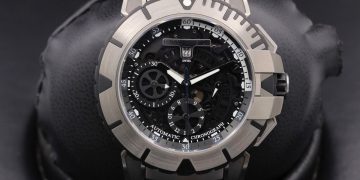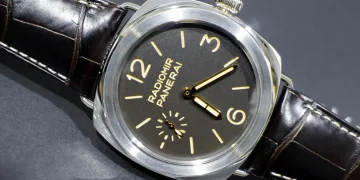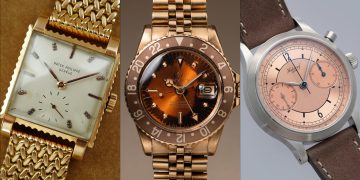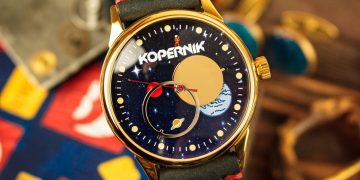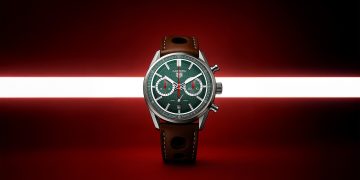Introduction:
When evaluating a watch, many factors come into play—design, functionality, price, and performance are some of the most commonly considered. However, one element that may significantly impact how a watch is perceived is its brand history. The legacy and reputation of a watch brand often shape the consumer’s view of its products, whether consciously or unconsciously. This raises the question: Does the history of a watch brand really influence how we evaluate its timepieces?
In this article, we will explore the role that a brand’s history plays in shaping consumer perceptions and how it affects their evaluations of watches. Does the weight of tradition, craftsmanship, and heritage elevate the value of a watch in the eyes of the consumer, or is it just a marketing tool to justify high prices and exclusivity? Let’s dive into how brand history can impact the evaluation of a timepiece.
1. The Role of Tradition and Legacy in the Watch Industry
Watches are often seen as much more than just tools to tell time—they are symbols of craftsmanship, innovation, and tradition. The history of a watch brand can offer insights into its core values and the level of expertise that has been developed over the years. For example, brands like Rolex, Patek Philippe, and Audemars Piguet have rich histories that go back over a century, and their long-standing traditions often play a major role in shaping how we view their timepieces.
1.1 Prestige of Longstanding Brands
The most established luxury watch brands tend to have a reputation for excellence that is rooted in their history. Rolex, for example, has been associated with precision, durability, and exclusivity since its founding in 1905. Its legacy of groundbreaking innovations, such as the first waterproof watch (the Rolex Oyster), and its role in historical events, like being the choice of explorers and athletes, adds immense value to its timepieces.
Consumers often look at this history as a stamp of approval. A watch from a brand with a long-standing legacy is not just a piece of functional machinery—it’s a symbol of tradition and a continuation of a heritage of innovation and quality.
1.2 Craftsmanship and Expertise
The history of a watch brand is also tied to its craftsmanship and expertise. Brands that have been around for centuries have had more time to perfect their designs, movements, and materials. Watchmakers from these brands often carry decades, or even centuries, of experience, which results in an unparalleled level of technical proficiency.
Take Patek Philippe, for example—founded in 1839, the brand is renowned for its complicated movements and intricate watchmaking techniques. Its long history of producing exceptional timepieces has established it as a leader in the luxury watchmaking industry, and this craftsmanship directly influences the evaluation of their watches. A Patek Philippe is not just a timepiece; it’s a testament to the centuries of tradition that have shaped it.
2. Brand History as a Sign of Reliability and Quality
For many consumers, a brand’s history speaks to its reliability and consistency in producing quality timepieces. If a brand has stood the test of time, it is often assumed that the brand’s watches have been reliable over the years. The consistent delivery of functional, aesthetically pleasing, and durable watches is often viewed as a hallmark of a reputable brand with a long history.
2.1 Trust and Confidence in Established Brands
Consumers are often willing to pay a premium for a watch from a brand with a strong history because they associate that history with trustworthiness and consistent performance. For example, Omega, which has been producing watches since 1848, is trusted by astronauts and has been associated with space exploration for decades. The long history of performance in extreme conditions builds trust and confidence among buyers that Omega watches will deliver not only in terms of style but also in terms of reliability.
This deep-rooted sense of trust can influence the evaluation of Omega’s watches. Whether the customer is buying a limited-edition model or a simple tool watch, the history behind the brand adds a layer of credibility that may make the customer feel more secure in their investment.
2.2 The Assurance of Heritage in Modern Models
Even modern models from heritage brands benefit from the history of the company. When a watch brand is known for its meticulous craftsmanship and commitment to quality, every new model in their collection carries the weight of this tradition. The heritage behind the brand offers buyers assurance that the same level of craftsmanship and precision will be found in new releases, even if they feature updated designs or new technologies.
For instance, Audemars Piguet is renowned for its Royal Oak collection, which has been an icon of luxury since its debut in 1972. The history of the Royal Oak line imbues the latest models with a sense of enduring quality, even as the brand evolves with new technologies and trends.
3. Does the Brand’s History Always Enhance the Evaluation?
While a brand’s history can undoubtedly add value to a timepiece, it is not always the sole factor in the evaluation process. In some cases, the emphasis on history can overshadow other important factors like price, performance, and design innovation.
3.1 The Overemphasis on Heritage in Some Cases
Some brands may leverage their long history as a marketing tool, using their heritage to justify higher prices or exclusivity. This can sometimes lead to inflated perceptions of a watch’s value, as consumers may overlook other critical factors like functional performance or materials quality in favor of the brand’s legacy.
For instance, there are several instances where watches from brands with rich histories are priced significantly higher than similar timepieces from brands with less prestigious backgrounds. While some of this price difference can be attributed to craftsmanship and heritage, it may not always equate to a proportionate increase in performance or quality.
3.2 Modern Brands with Less History
On the other hand, newer brands like TAG Heuer and Hublot, while not as historically established as some of their competitors, have earned respect for their innovative designs and cutting-edge technology. These brands have built a reputation based on performance, design aesthetics, and modern innovations, rather than historical significance. For some consumers, the lack of a lengthy history does not detract from the value of the product—it may even be seen as an advantage, offering a fresh approach to watchmaking.
For example, Hublot revolutionized the luxury watch market with the introduction of the Big Bang in 2005, a watch that fused rubber with precious metals—an innovation that was not common in the industry at the time. While Hublot does not have centuries of tradition, it has made a name for itself as a dynamic and forward-thinking brand.

4. Emotional Value: Heritage and Personal Connection
Beyond technical and functional factors, the emotional connection between a consumer and a brand’s history also plays a major role in how a watch is evaluated. Watches from brands with a rich history often carry a symbolic value, representing more than just timekeeping. For some, owning a watch from a historic brand is about aligning with a legacy of success, style, or achievements.
For instance, the allure of owning a Rolex Daytona is not just in its features or performance but also in its association with motorsport legends like Paul Newman. The legacy of Rolex’s involvement with high-profile figures and its representation of success can create an emotional pull that adds significant value to the watch, beyond its actual function.
5. Conclusion: How Much Does Brand History Influence Your Evaluation?
In conclusion, the history of a watch brand can greatly influence how its timepieces are evaluated. A rich heritage and long-standing tradition can lend an air of prestige, reliability, and craftsmanship to a watch, making it more desirable and valuable in the eyes of consumers. For many buyers, the history of the brand adds an intangible layer of exclusivity, trust, and heritage, which can elevate the perception of the watch.
However, history should not be the only criterion for evaluating a timepiece. Other factors such as price, performance, design innovation, and materials are just as important in determining the overall value of a watch. In the end, the brand’s history can influence a watch’s evaluation, but it is ultimately the combination of history and modern-day performance that defines a truly exceptional timepiece.
For some consumers, the history behind a brand may not matter as much as the innovation and value offered by modern brands. For others, the brand’s legacy is a significant factor in their buying decision, with the story behind the watch adding depth to the experience of ownership.



